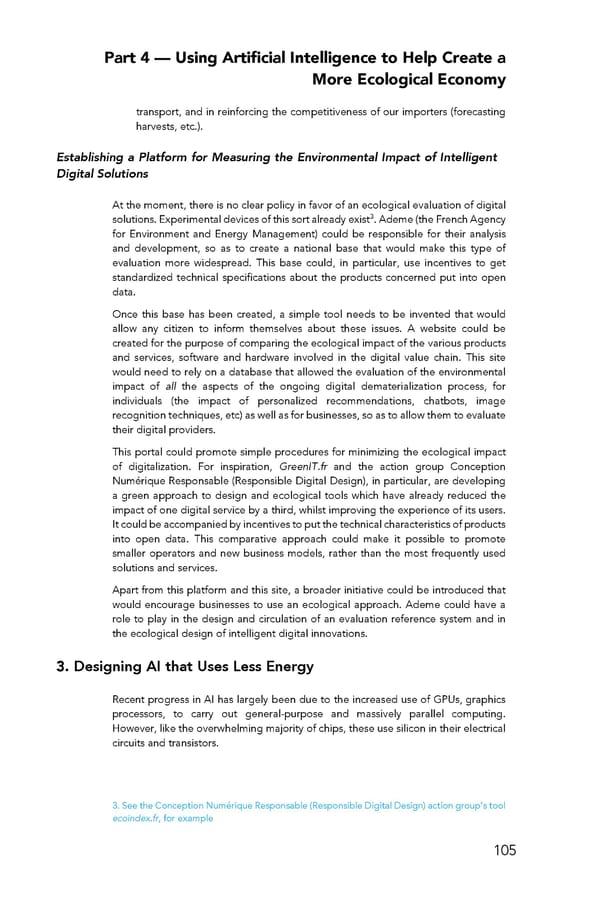Part 4 — Using Artificial Intelligence to Help Create a More Ecological Economy transport, and in reinforcing the competitiveness of our importers (forecasting harvests, etc.). Establishing a Platform for Measuring the Environmental Impact of Intelligent Digital Solutions At the moment, there is no clear policy in favor of an ecological evaluation of digital solutions. Experimental devices of this sort already exist3. Ademe (the French Agency for Environment and Energy Management) could be responsible for their analysis and development, so as to create a national base that would make this type of evaluation more widespread. This base could, in particular, use incentives to get standardized technical specifications about the products concerned put into open data. Once this base has been created, a simple tool needs to be invented that would allow any citizen to inform themselves about these issues. A website could be created for the purpose of comparing the ecological impact of the various products and services, software and hardware involved in the digital value chain. This site would need to rely on a database that allowed the evaluation of the environmental impact of all the aspects of the ongoing digital dematerialization process, for individuals (the impact of personalized recommendations, chatbots, image recognition techniques, etc) as well as for businesses, so as to allow them to evaluate their digital providers. This portal could promote simple procedures for minimizing the ecological impact of digitalization. For inspiration, GreenIT.fr and the action group Conception Numérique Responsable (Responsible Digital Design), in particular, are developing a green approach to design and ecological tools which have already reduced the impact of one digital service by a third, whilst improving the experience of its users. It could be accompanied by incentives to put the technical characteristics of products into open data. This comparative approach could make it possible to promote smaller operators and new business models, rather than the most frequently used solutions and services. Apart from this platform and this site, a broader initiative could be introduced that would encourage businesses to use an ecological approach. Ademe could have a role to play in the design and circulation of an evaluation reference system and in the ecological design of intelligent digital innovations. 3. Designing AI that Uses Less Energy Recent progress in AI has largely been due to the increased use of GPUs, graphics processors, to carry out general-purpose and massively parallel computing. However, like the overwhelming majority of chips, these use silicon in their electrical circuits and transistors. 3. See the Conception Numérique Responsable (Responsible Digital Design) action group’s tool ecoindex.fr, for example 105
 For a Meaningful AI - Report Page 105 Page 107
For a Meaningful AI - Report Page 105 Page 107